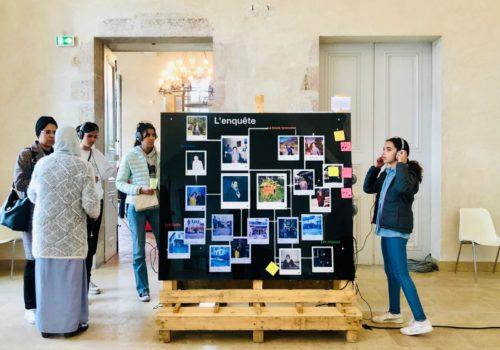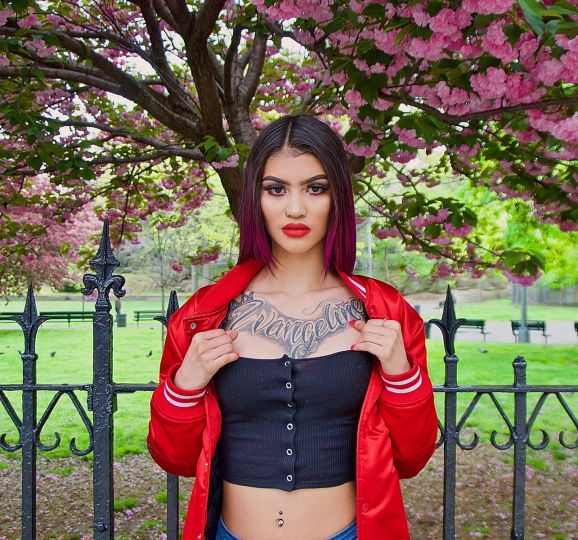The Eye of Photography opens a new column on collective photography, with the words of Benjamin Rullier. Far from the image of the solitary artist, photographers choose to gather in collectives. Collaborative projects, bridges between practices, economic realities: each month, a founding or active member presents their collective, its specificities, and its challenges. Join the group!
Established in Auvergne-Rhône-Alpes, founded over 10 years ago by a group of photographers transitioning professionally, and creators of an exhibition space in a town of 300 inhabitants, Blick Photographie advocates for creating together within a community. We spoke with Chloé Colin, co-founder of the collective.
How did you get into photography?
I’ve always had a passion for art and culture. After my studies, I worked at the Institute of Fine Arts in Mexico, and that’s where I allowed myself to start taking pictures. It was a fairly simple tool to use, but ultimately very demanding: understanding the image, the language of photography, using it as a medium. And then my father was a photographer, and he passed that on to me before he died. Since photography is intimately linked to death, to mourning, it made even more sense.
What prompted your move towards collective work?
In 2012, I was looking for training to transition into photography, and I joined the Bloo school in Lyon, which was just starting out. Over the course of a year-long program, we had the chance to participate in workshops with very different perspectives from renowned photographers: Michael Ackerman, Anders Petersen, Jeffrey Wolin, Delphine Balley, Elina Brotherus, Olivier Culmann, Richard Dumas, Stéphane Charpentier. It was the workshop with Bertrand Meunier from Tendance Floue that really appealed to us. He particularly told us about the history of the collective. I liked the idea of working together: enriching each other with diverse perspectives, stimulating everyone’s creativity, pushing for excellence, avoiding complacency, striving for the best.
Is that when Blick was born?
Amandine Bailly and I launched the venture. Then Loïc Xavier joined us in co-directing, along with Malika Mihoubi and Damien Brailly; we were all transitioning professionally. Like Tendance Floue, we wanted to spend time in photographic areas and work together.
So, for you, the work of a photographer immediately became collective?
Photography is an author’s work, and like that of a writer, it’s quite solitary, and that’s not what I’m looking for. I like to be stimulated by exchange.
What were your first projects?
Right after leaving school, I started a project called “Espèces d’Espaces” to explore the interaction between space and individuals. I began work in the town of Saint-Fons, collaborating with two others. I also started talking about Blick, sharing all my ideas, and we quickly became photographic partners for the Auvergne-Rhône-Alpes region, conducting artistic practice workshops. We worked with the MJC (Youth and Culture Center) in Villeurbanne, where we were able to lead workshops for a whole year. Then the DRAC (Regional Directorate of Cultural Affairs) changed its policy and decided to allocate more resources to areas considered culturally distressed. For example, we were propelled into the town of Tarare, between Lyon and Roanne.
How did you experience this shift?
Some people might have felt uncomfortable arriving in a specific area. We also realized that it wasn’t so easy to work collectively because we had different personalities, very different styles. In fact, the DRAC and the Auvergne-Rhône-Alpes region gave us a direction that we had hardly chosen at the beginning, but they supported us both financially and morally. It was invaluable.
What has become Blick’s characteristic, direction, DNA?
The starting point is the territory: immersing ourselves in the space to each work with our own style, with our own perspective.
Transmission and mediation also play a significant role.
We have always emphasized a discourse: “If you don’t let us create, the mediation won’t be interesting.” We don’t create workshops for mediation; we develop our creations individually, and we share from the moment we create. We found a way to make a living while developing and defending our work.
Was this desire to defend the work of photographers what led you to create the photographic space of Grand Colombier?
We wanted to highlight the artistic aspect, to welcome quality photographers (Stéphane Charpentier, Sarah Ritter, etc.) in good conditions. Since within the association, we work voluntarily, and it can be exhausting, at least we want to be able to pay the artists! And it made sense to offer these exhibitions in the countryside. There’s nothing else between Lyon and Geneva, and we’re in the middle. Unfortunately, the place is on hold due to loss of support, and we don’t want to hold exhibitions without paying the photographers.
Is it a continuous struggle for funding?
We’ve been around for over ten years, and it’s always a hectic pace because we always have a lot of work. We’re at a point where we should hire someone to manage the association. It’s a matter of money and time, continuously reapplying for funding.
Is this one of the limitations of this model?
The model is good, but what’s difficult is managing this collective. Everyone thinks it’s great, but when it comes to the concrete aspects of administration, coordination, there are fewer people to help. All artists try to find their economy: it’s always a compromise between creative time and making a living. There are very few people who have the time to manage an association on top of everything else.
Who are the people in Blick Photographie?
At first, we integrated photographers through word of mouth, then we put out calls for applications. We gradually opened up to other mediums, but we still want the image to be at the center. We’ve all dabbled in sound and video to some extent; some, like me, are moving towards a more artistic approach, blending different artistic mediums.
What can the collective offer to photographers?
Apart from working together, mixing perspectives, when new artists bring projects through the collective, they benefit from all the experience that comes with it. It facilitates project validation, funding, and expands networks in this small world of photography.
Can you tell us about a current project?
Our new major project is called “DÉ/S/RIVES” and focuses on the Rhône and water. It’s a project that combines photography, sound, video, and writing led by Ahmed Boubakeur, Loïc Xavier, Marine Lanier, and myself. The idea is to connect scientific and artistic discourse around water. We were invited to a residency for a school in Villeurbanne. For the workshop part, we proposed working on “Riversides and Dreams,” which made sense in this establishment separated from the Rhône by the highway. It’s a project made up of several fragments that will be carried out until 2026.
More information
A photographer, author and journalist, Benjamin Rullier explores images and text and the way they interact. In his personal projects, he focuses on long-term themes such as bereavement, leisure time and the relationship with the body. Working with cultural media (L’Oeil de la photographie, Kostar, Wik) and social media (La Topette, Bobine Magazine), he likes to build bridges between culture and society, particularly through photo and text portraits.
















